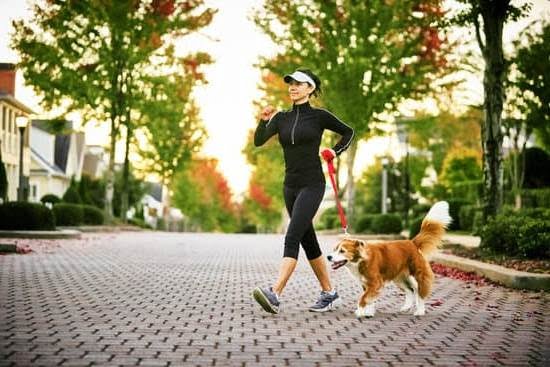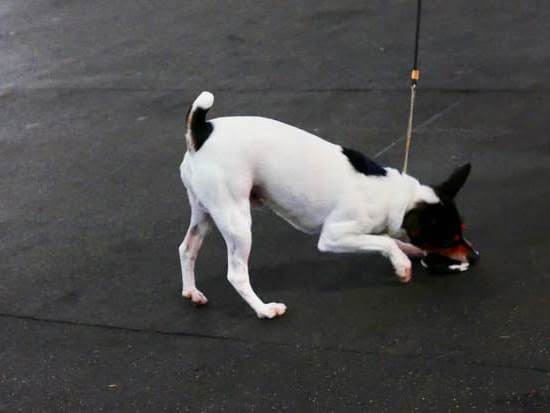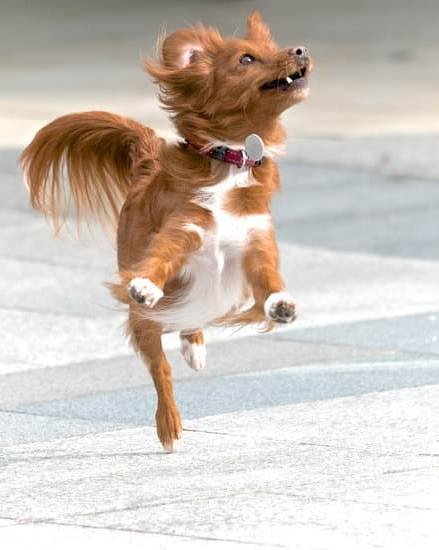Introduction
Litter box training is a controversial yet potentially beneficial way of training your dog to use the litter box for urination and/or defecation. This is often done as an alternative to taking your pet outside, which can save time and reduce accidents in the home. As with any form of training, litter box training takes patience, consistency and rewards (like treats or praise).
By teaching your dog this skill, it could free you from needing to take them out in inclement weather or inconvenient times; It is also a great choice for those who are confined to their home or have limited mobility. Litterbox training may help improve the bond between you and your pup by creating opportunities for positive reinforcement when they use their box correctly. Furthermore, it eliminates smells associated with your pet relieving themselves indoors, creating a better environment in your home. With proper care, it can be easy to maintain multiple boxes where necessary and provide quick cleanup when required.
Of course, before starting a litter box program for your pet you should consult with your veterinarian to make sure this is an appropriate option for them as well as discuss any medical issues that could affect its success rate. Taking into account any physical needs such as age or illness will ensure that the process is done safely and properly.
Tools You Will Need to Successfully Train Your Dog
The most important tool for litter box training a dog is patience. In addition to having patience, you will also need a few other items to make the process easier:
1. Litter Box: This can be either a regular cat litter box or a special box made for dogs. If you decide to go with the latter option, make sure it has enough room for your pup to move around and turn around inside the box.
2. Reward Treats: Having treats available while training will help reinforce positive behaviors and make your pup more likely to repeat them in the future. Make sure that you use something special as a reward; like their favorite treat or toy.
3. A Clicker: The clicker is an effective tool used by pet owners and trainers alike because it helps pinpoint and recognize particular behavior in an animal. When they perform a desired action, they hear a particular sound followed by a treat which will further encourage them to behave accordingly each time.
4. Positive Reinforcement: It is important that your pup receives positive reinforcement for successful potty trips in order to keep up motivation, boost confidence, and build trust between you and your canine friend, so try saying “good job!” along with lavish praise after every success!
Choosing the Appropriate Litter Box for Your Dog
When choosing an appropriate litter box for your dog, size and functionality are key factors to consider. A litter box needs to be large enough so that your pooch can comfortably enter and exit without feeling too confined. Additionally, the right box should have high walls to avoid accidents or spills when they go in and out. A shallow tray or a bedpan-style litter box may be the perfect choice if you have a small breed of canine. For larger dogs, opt for a larger litter box with deeper basins and higher sides. Some boxes even offer stairs on one side so that your pup can climb up easily to use the restroom inside. Furthermore, some also come with dividers that can help create more space if necessary. In addition to size and structure, you may want to make sure the material is durable enough to handle occasional scratching or accidental biting by your pup while they’re learning how to use it properly.
Teaching Your Dog the Basics of Litter Box Use
To begin the litter box training process, start by introducing your canine to a litter box filled with a pre-made substrate that is safe and edible for the dog. After acclimating your pup to the litter box, encourage them to use it regularly by offering surface-level treats or rewards when they enter it. Make sure that you keep an eye on them at this initial stage so as to not create any negative associations between the box and punishment. When they’re more comfortable around the box, you can begin introducing different kinds of body movements in association with it — such as sitting, pawing, and digging in it — as positive reinforcement towards their desired behavior. Additionally, if your pup shows reluctance towards using the box instead of going elsewhere within their designated part of the house (or outside), don’t be afraid to physically move them over when necessary and remain patient and consistent about removing or replacing traces for any accidents. After some time, your pooch should have become adept enough to successfully utilize their litterbox whenever needed.
Navigating Common Challenges During Training
When it comes to litter box training your dog, there are some common challenges you may come across. One of the most common is teaching your dog that the litter box is only for urinating and not for pooping. You will want to invest in a separate training pad for your dog’s bowel movements and place it outside of the litter box. When you’re away from home, try to keep the same spot for relief so your pup gets used to one specific area for elimination. Meanwhile, it is also important to remain consistent when cleaning up after your dog—regularly clean the litter box and dispose of all waste properly, as well as reward them with treats or praise when they use the littler box correctly. Finally, don’t forget that it takes time and patience to successfully train a puppy and like everything else, repetition will lead to success!
Incentives to Motivate Your Dog
In order to successfully litter box train your dog, it is important to provide incentives for them to use the box. Positive reinforcement is an effective way to get your pup to understand that however they behave, there are rewards and punishments based on their behavior. Food treats or favorite toys can be used as rewards when your pup responds appropriately by using the litter box. Additionally, try a combination of verbal praise and/or physical affection such as petting or cuddling when your pup uses the box correctly. Create harmless consequences for not using the litter box, such as temporarily removing access to the box so that they cannot ignore it or use it incorrectly. Whatever incentives you choose to go with, make sure that they are consistent and communicated clearly with kindness. Consistency is key!
Cleaning and Maintaining the Litter Box Once Training is Complete
Once a dog has been successfully litter box trained, it is important to keep up with regular maintenance of the litter box. This includes keeping the area around the litter box clean and free from any messes. Accidents may still happen for a few weeks or months after completion of training, but these should become less frequent as the dog becomes better trained. Regularly emptying and refilling the litter box is essential in order to make sure that it remains clean and inviting to the dog. Additionally, it is important to routinely check both the outer area of the litter box and its inner surfaces for debris such as feces or wet spots so that they can be quickly cleaned up before they have time to harden or set in place. Finally, any plastic bags or loose materials around the box should be replaced often in order to prevent bad smells from developing. With consistency and dedication to cleaning and upkeep, having a successfully trained dog will add joy and companionship to your home environment!
Questions to Ask Yourself During Training
1. What types of rewards should be used when reinforcing good behavior during litter box training?
Rewards used during litter box training should be consistent and appropriate to the behavior you are rewarding. Positive reinforcement can be effective in the form of treats, verbal praise, petting, extra playtime, or a favorite toy. For dogs that respond strongly to food, treats can be especially powerful tools in helping them learn new behaviors quickly.
2. Should I scold my dog for inappropriate bathroom behaviors?
No – scolding your dog during litter box training will not help him learn where they should go to the bathroom and could instead lead to fear and anxiety when going near a litter box. Instead of scolding your dog, try redirecting him and giving him positive reinforcement when he goes in the proper location.
3. How long should I expect it to take for my dog to become trained?
Totally depends on several things including how old your pup is, their individual learning abilities, how long you spend working with them daily, and how well you understand how to motivate them for positive reinforcement. Generally speaking though, with some patience and consistency this training usually takes about one or two weeks depending on each individual pup’s development rate.
Crafting a Litter Box Training Plan
When it comes to litter box training your dog, creating a plan and strategy for success is key. First, deciding what type of litter box to use and where to place it within the home is essential. A shallow plastic container with low sides works well for small dogs, while bigger breeds may require a deeper bin to ensure they can enter and turn around without difficulty. Placing the litter box in an area away from furniture and family activities can also help prevent distractions while housebreaking.
Once the litter box is in place, begin teaching your pup to associate it with pottying properly by using positive reinforcement such as treats and praise when they go in the right spot. Avoid scolding or punishing them if they don’t get it right away; instead offer guidance by gently moving them towards the desired location each time until they learn the behavior. Additionally, setting up toileting reminders like bells at the door or timed bathroom breaks can help your dog develop good habits that will help reduce accidents. Establishing proper cleaning guidelines for both you and your pup will also be important for maintaining a clean and fresh litter box every day so neither of you has to worry about unpleasant odors or messes in the house.
Conclusion
Training your dog to use a litter box can be an easy and rewarding experience for both the dog and the owner. Here are some tips for ensuring a successful canine litter box training:
1. Make sure you select a spot for the litter box that is away from your dog’s food and water, as well as any other high-traffic areas of your house.
2. Provide regular access to the litter box, especially when teaching them to use it or after they have used it so they understand that it is a safe place to relieve themselves.
3. Praise your dog when they use the litter box so they understand that it is desired behavior.
4. Place small pieces of kibble in their litter box to incentivize them and reward them immediately (e.g., right after they finish their business) so they learn to associate using the litter box with positive reinforcement.
5. If your dog eliminates outside of their designated area, try not to discipline them harshly – instead make sure you clean up thoroughly and make sure that any trace of urine is removed from wherever possible before returning your pup there again. Doing this will prevent them from associating punishment with relieve themselves in their designated area.
6. Provide plenty of potty breaks for puppy/older/disabled dogs more frequently throughout the day, and make sure there are no obstacles between the dog and the litter box that could inhibit their ability to get there (like closed doors or furniture).
7. Lastly, if you aren’t having success with one particular kind of litter, try out different types until you find one that works best for your pup’s preference!

Welcome to the blog! I am a professional dog trainer and have been working with dogs for many years. In this blog, I will be discussing various topics related to dog training, including tips, tricks, and advice. I hope you find this information helpful and informative. Thanks for reading!





